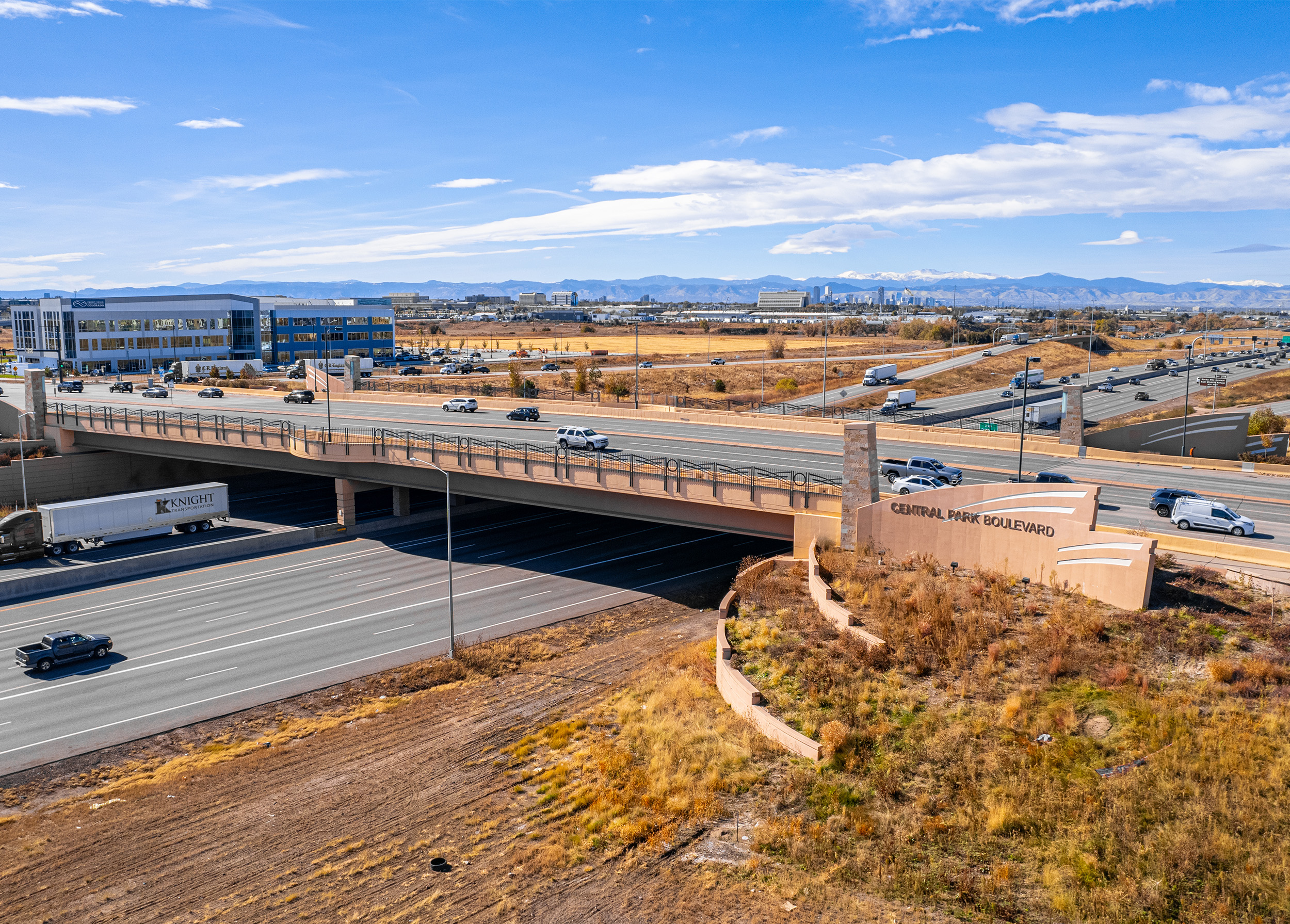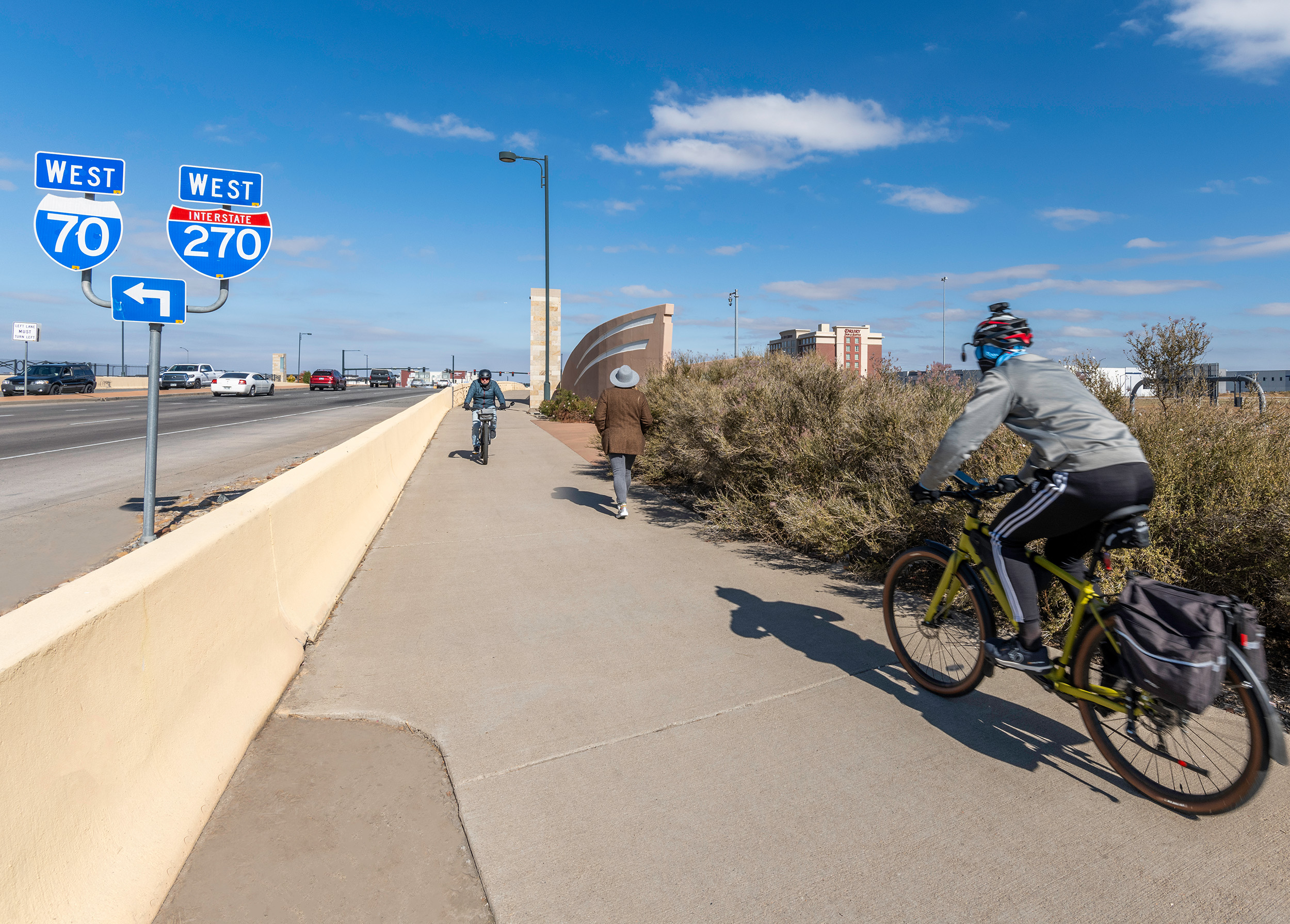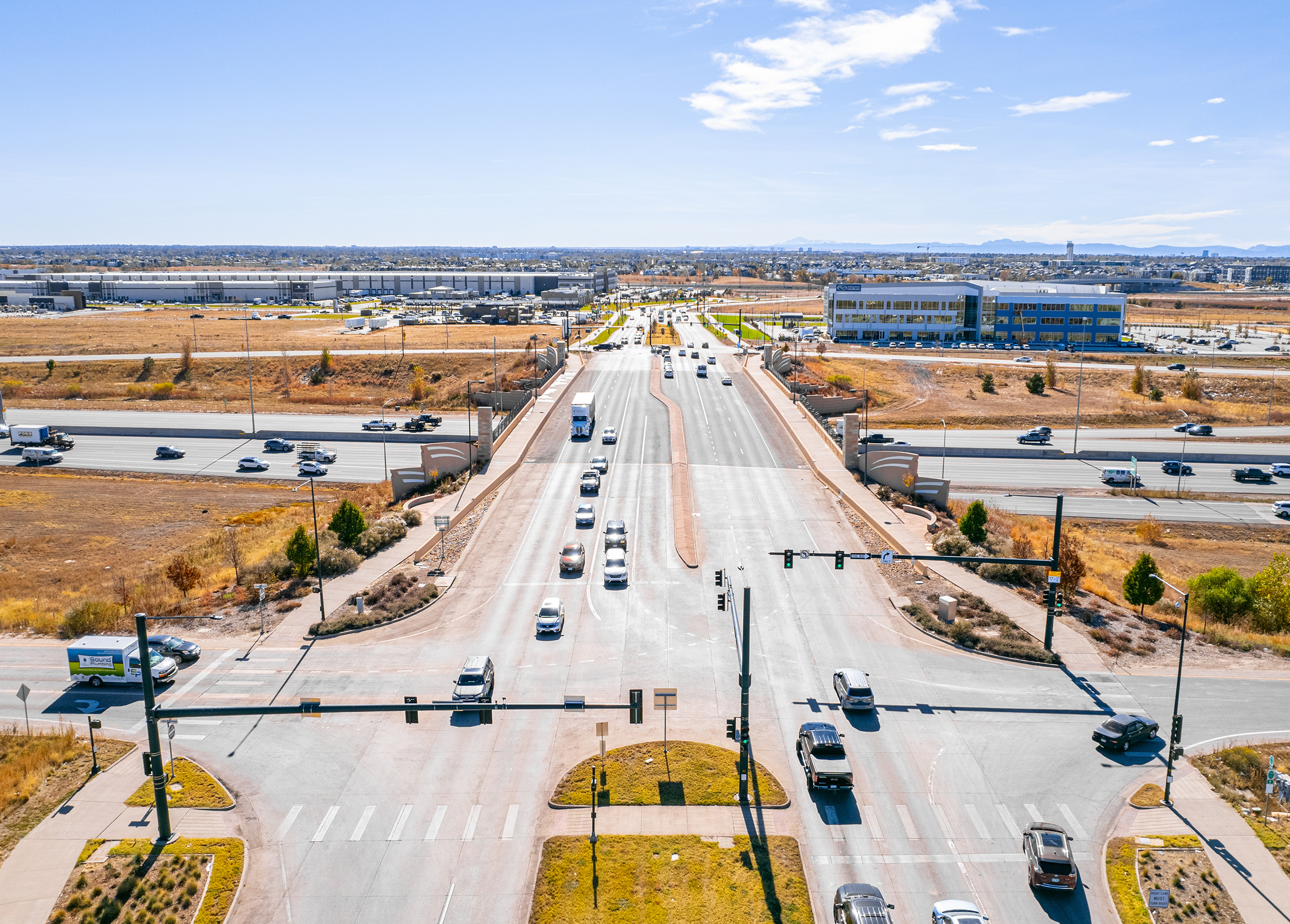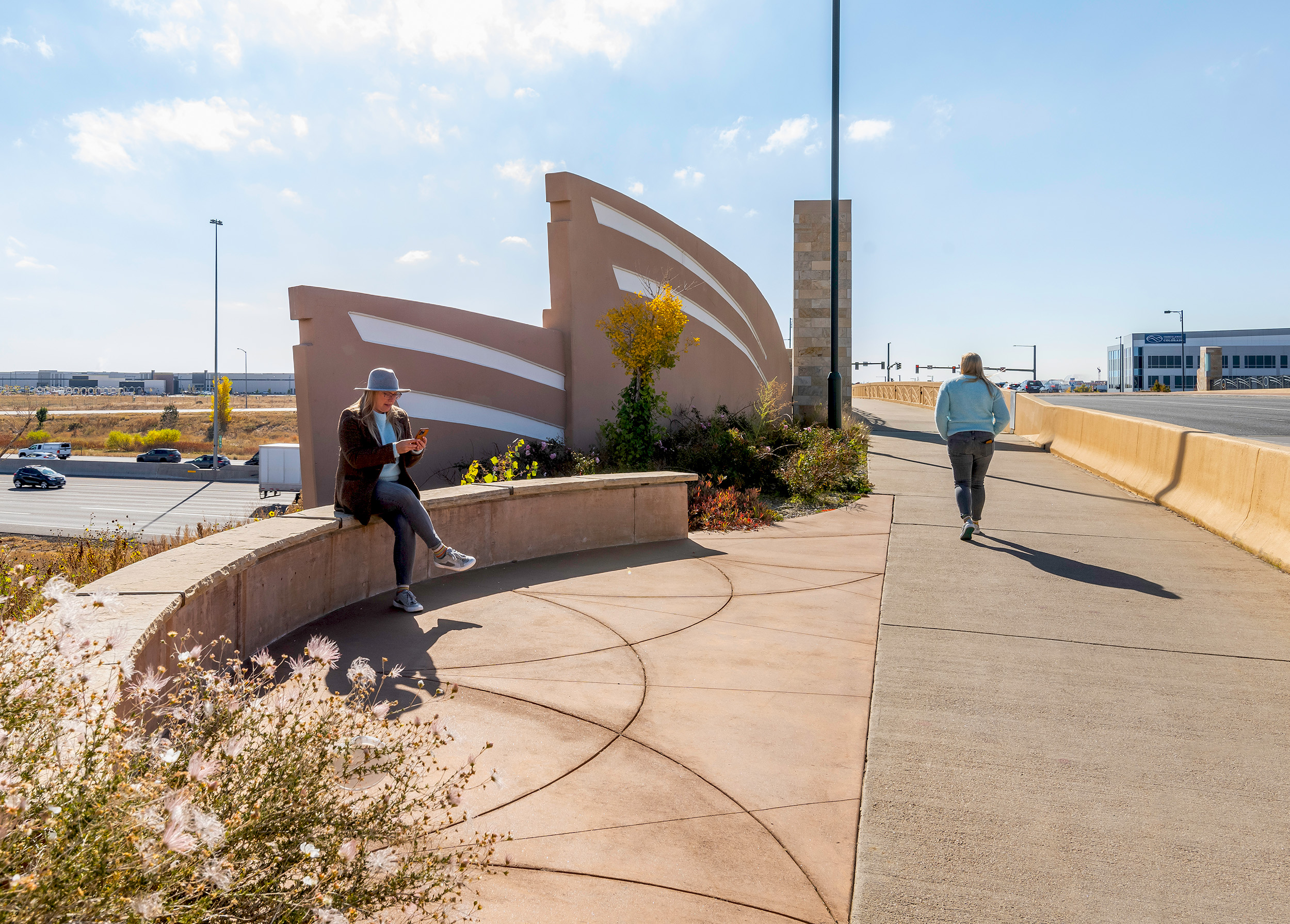Central Park Boulevard over I-70
The Central Park Boulevard Interchange with I-70 provides an important new interstate access within the City and County of Denver. Using braided ramp networks on both sides of I-70, the interchange provides direct access to and from both I-70 and I-270 with the Central Park community, The Shops at Northfield, and Dick’s Sporting Goods Park. The $30 million interchange design and construction were primarily funded and managed by the City and County of Denver in partnership with the Colorado Department of Highways. The project included $12 million of American Recovery and Reinvestment funds, requiring an expeditious process in both design and construction.
Wilson & Company teamed with SEMA Construction to complete the project through a design-build delivery. Wilson & Company provided the design of three major bridge structures; roadway, drainage, traffic, and maintenance of traffic design; and overall design project management. Wilson & Company also provided the architectural design for the project, including the Central Park Boulevard Bridge over I-70, which serves as a gateway for traffic entering the city from the east as well as from the Denver International Airport. The design of a new bridge over I-70 accommodated the future widening of I-70 and eight new interchange ramps: four ramps connecting to I-70, two ramps connecting to I-270, and two slip ramps. The ramps connecting to I-270 were braided ramps requiring two new three-span bridges. The project was in an environmentally sensitive area that has been preserved through an Environmental Compliance Plan executed by Wilson & Company. The concerns of the public were addressed through a Public Information Plan managed by Wilson & Company.
Minimizing impacts on the traveling public was identified as a key project goal, which led to a combination of Accelerated Bridge Construction (ABC) techniques and Construction Management/General Contractor (CM/GC) delivery. This was the first bridge design and construction utilizing this method for CDOT.
Wilson & Company also provided the overall Quality Management leadership for the project, including developing the Quality Management Plan and project quality assurance activities.
Notice-to-Proceed for the project was received on February 1, 2010. The project utilized an integrated design and construction process, enabling initial construction activities to begin in May of 2010. The majority of the design was completed by the summer of 2010, keeping the project on track and becoming fully operational by November 2011.




